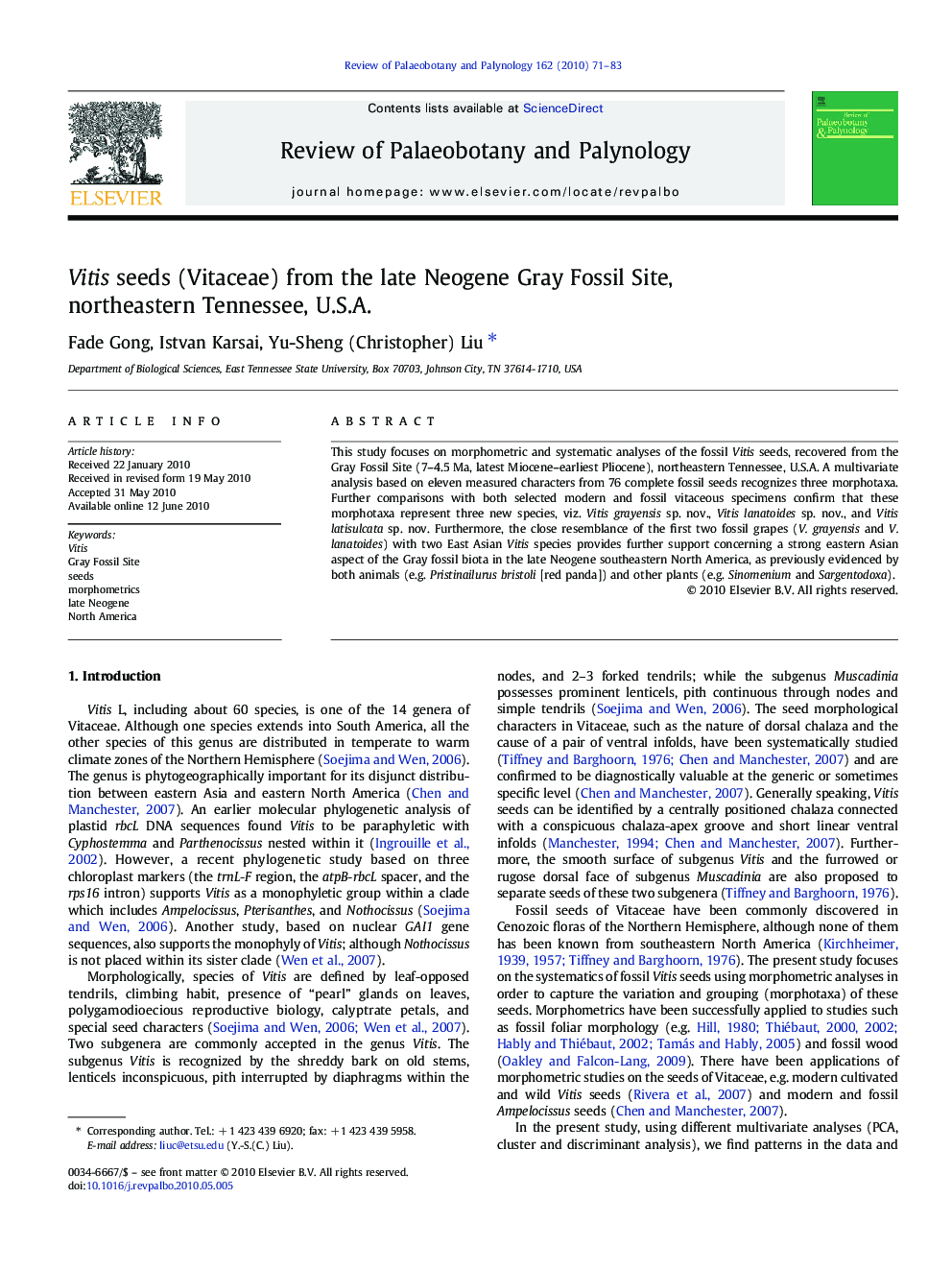| Article ID | Journal | Published Year | Pages | File Type |
|---|---|---|---|---|
| 4750686 | Review of Palaeobotany and Palynology | 2010 | 13 Pages |
This study focuses on morphometric and systematic analyses of the fossil Vitis seeds, recovered from the Gray Fossil Site (7–4.5 Ma, latest Miocene–earliest Pliocene), northeastern Tennessee, U.S.A. A multivariate analysis based on eleven measured characters from 76 complete fossil seeds recognizes three morphotaxa. Further comparisons with both selected modern and fossil vitaceous specimens confirm that these morphotaxa represent three new species, viz. Vitis grayensis sp. nov., Vitis lanatoides sp. nov., and Vitis latisulcata sp. nov. Furthermore, the close resemblance of the first two fossil grapes (V.grayensis and V.lanatoides) with two East Asian Vitis species provides further support concerning a strong eastern Asian aspect of the Gray fossil biota in the late Neogene southeastern North America, as previously evidenced by both animals (e.g. Pristinailurus bristoli [red panda]) and other plants (e.g. Sinomenium and Sargentodoxa).
